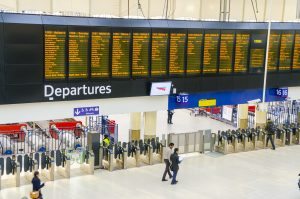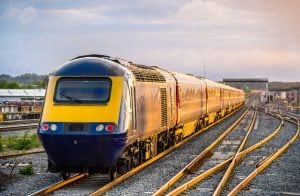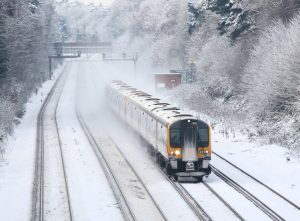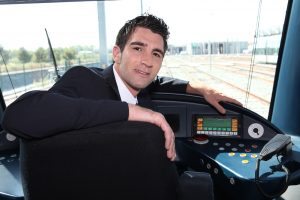 Train drivers work for local and national rail companies servicing passengers, freight trains, or pulling engineering equipment related to track maintenance. A train driver needs to be able to concentrate for long periods of time, want to work 35 hours per week, and have customer service related skills. Drivers also have to react to unexpected problems with calmness and quickness. There are no specific educational requirements or qualifications; however, drivers should have a good basic education.
Train drivers work for local and national rail companies servicing passengers, freight trains, or pulling engineering equipment related to track maintenance. A train driver needs to be able to concentrate for long periods of time, want to work 35 hours per week, and have customer service related skills. Drivers also have to react to unexpected problems with calmness and quickness. There are no specific educational requirements or qualifications; however, drivers should have a good basic education.


Education Requirement
Most employers looking to hire train drivers will require at least good scores in GCSEs for maths and English. It is helpful if a trainee has mechanical or electrical knowledge.
Some candidates begin working for the railway system in another job such as maintenance crew or as part of the station staffing then build up to train driver. Most companies promote within especially for train drivers.
Training Information
If eligibility requirements and tests are passed then training is usually 9 to 18 months with a cab simulator. A variety of real life situations are tested such as bad weather, trackside dangers, and mechanical failure. Training is a four stage process:
- Rules and Regulations
- Train Handling- involves 200 to 300 hours of practical driving including night situations
- Traction Knowledge
- Route Knowledge
After training a candidate will need to complete the Personal Track Safety Certificate test which shows the person is a fully qualified train driver. There are two levels: certificate in rail service for shunting and diploma in rail services for driving. While training and tests occur at the beginning of a driver’s career there are also regular assessment periods that will test skills throughout a person’s career in order to maintain eligibility requirements.
Age
Age is specific to the rail company, for example the national rail network requires candidates to be 21 years of age or older. It is possible to start at 18 by working and training in the yards and depots which do not handle passenger lines. The London Underground requires any candidate to be 18 years of age.
Assessment Tests
Once a candidate passes the initial application phase it is time to take part in the assessment tests and interview process. The assessment tests often cover basic mechanical knowledge, reaction time, test the ability to memorise and recall information, concentration, and group exercises.


Medical Examination
Medical standards are in place for train drivers to ensure ample fitness exists. Medical checks include fitness levels, colour vision, hearing, eyesight, and drug and alcohol screening.
Height limits are in place and will be assessed during the medical exam. While the height requirements are not strict the Railway Group Standards requires drivers to be between 5 foot 4 inches and 6 foot 4 inches to be able to fit into the cab control area.
Fitness is assessed on general principles in which a person should not exceed a BMI of 33, but as long as a doctor does not see any medical condition or mobility is not impaired a pass can be provided. BMI should be around 28 based on proper weight for one’s height.
Hearing needs to be normal with no more than 30 decibels hearing loss in either ear for frequencies of .5, 1 and 2kHz. The minimum must be met without a hearing aid. Hearing aids do not disqualify applicants; however, the minimum still has to be met without it in.
Candidates cannot have any medical history of epilepsy, blackouts, balance loss, co-ordination issues or mobility limitations for safety purposes. Medical tests do include diabetes, hearing, and blood pressure tests to ensure that there are no underlying medical conditions that could exclude a candidate for safety reasons.

Candidates and train drivers are screened for all illegal drug use and alcohol. Drivers cannot be under any influence of substances including alcohol while working. It means that if someone drinks they need to make certain it is not the night before they are driving again to ensure the alcohol is cleared completely from their system.
Eyesight requirements require distance vision to be at least 6/9 or 6/12 in the weaker eye. Corrective lenses can be worn. There are some train operating companies that do not allow contact lenses to be worn. Colour blindness is also an issue as signs and indicators need to be seen clearly and accurately.